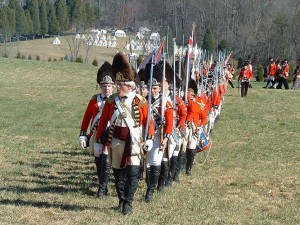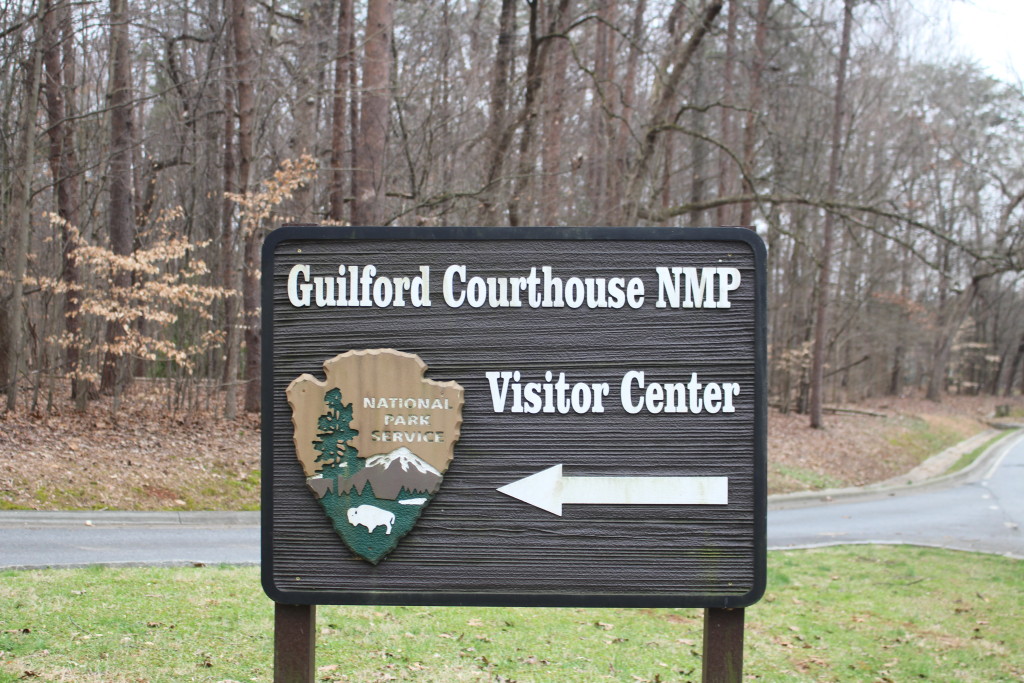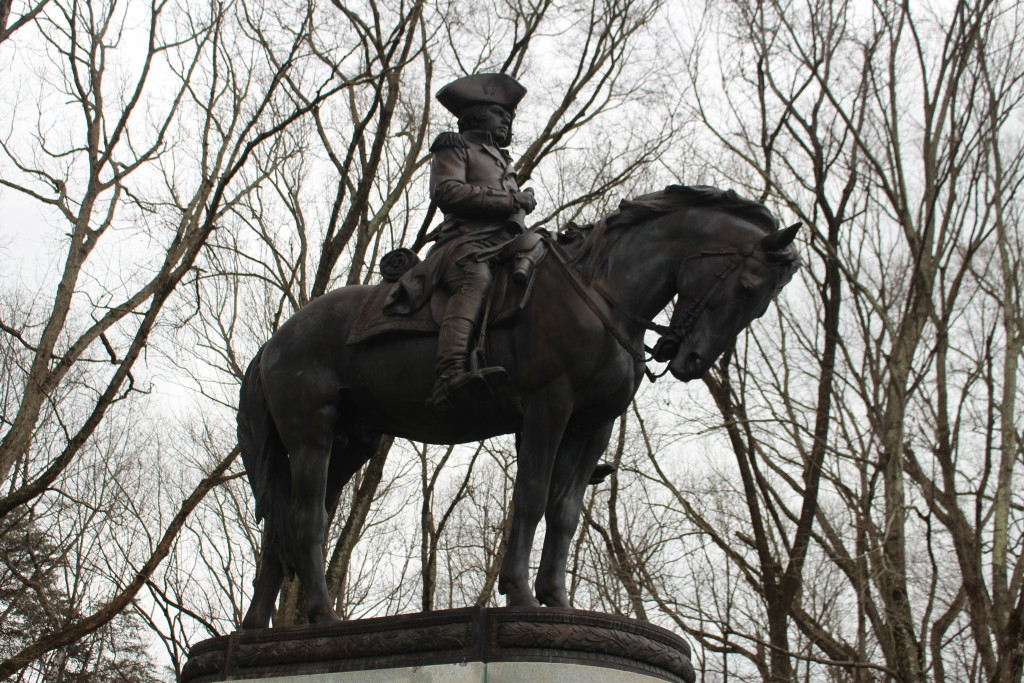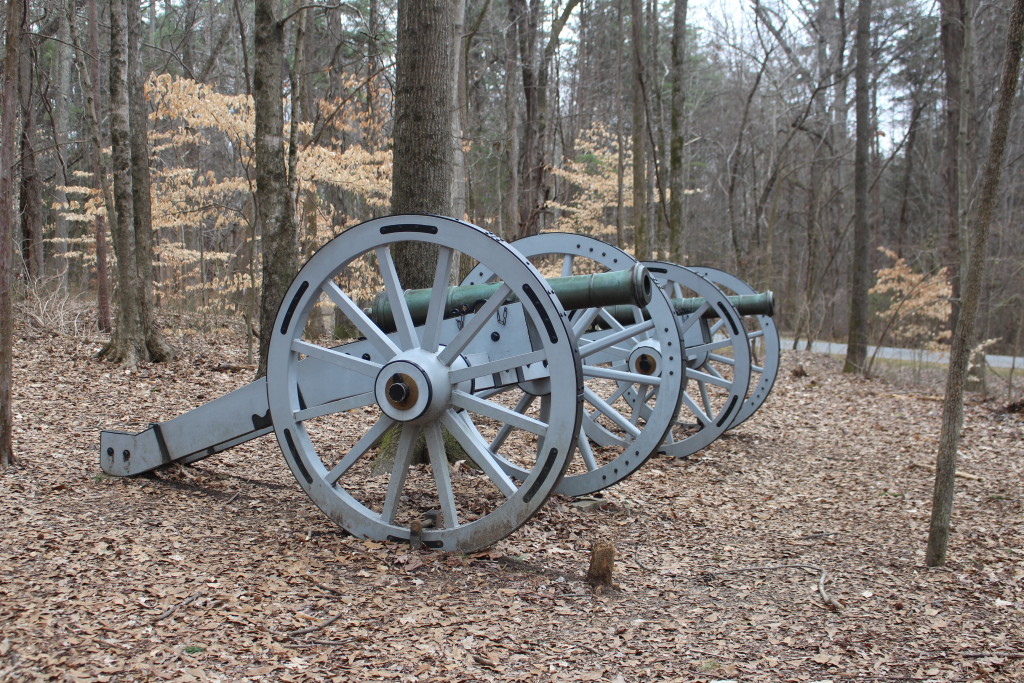The Battle of Guilford Courthouse was fought on March 15, 1781, two months after the Battle at Cowpens. Guilford Courthouse was the first time that General Cornwallis and his Provincial army would fight General Greene and the Continental Army. The two armies had fought previously, but commanded by different people, and both were resounding defeats for the Patriots.
General Nathanael Greene had taken over the southern Continental army in November of 1780, but he knew that confronting Cornwallis and his army directly would result in losing the southern army, the one thing Greene had been charged not to do. Following the Loyalist defeat at Cowpens, General Cornwallis was determined to destroy the Continental army. A game of cat and mouse ensued, with Greene and his army staying still just long enough to harass Cornwallis and destroy a section of his army, and then running away. Because much of Greene’s army was militia, accustomed to traveling light, they were able to move more quickly than Cornwallis’s army.
Cornwallis grew increasingly frustrated, always a day or two short of catching Greene and the Patriot army. Finally, Cornwallis burned all the supply wagons. Until they caught Greene, his army would march only on what they could carry. Greene, meanwhile, had finally spotted a place where he thought he could make a stand against Cornwallis: Guilford Courthouse. Greene chose this open area because his main army would have the high ground. He deployed his men much as Morgan had done at Cowpens. The first two lines were militia from North Carolina and Virginia. The third line was made up of soldiers from Virginia, Delaware and Maryland. Cavalry were in reserve to be used as needed. Greene had over 4,000 men lined up on the field.
Cornwallis, unlike Tarleton at Cowpens, took time to study the ground and the deployment of troops. He decided to attack slightly from the side instead of head-on. He also used cannon fire for a while to loosen up the lines before he had his infantry attack. When the time seemed right, he sent his infantry marching forward.
Greene had told his militia, “Shoot twice, and then you can go home.” He meant that they should shoot twice, and then run to the rear of the field and reform to support the army. But the militia did not interpret his orders as he meant. They shot twice, with deadly effect, but then they turned and ran – home. These were North Carolina men and they melted into the woods and went back to their homes.
 The Virginia militia, however, held their line and fought valiantly until they were ordered to retreat. The Patriot army did the same. The Loyalist army, with half the number of men, fought tenaciously and bravely. At one point, seeing the armies hopelessly muddled in the middle, Cornwallis ordered cannon fire on his own men to get enough separation to send in the reserves. When the Loyalist army reached the third line of the Patriot army, Greene called for an orderly retreat. The British won the field but lost 25% of their army. The Patriots lost half that number of men and Greene was able to withdraw with his army intact.
The Virginia militia, however, held their line and fought valiantly until they were ordered to retreat. The Patriot army did the same. The Loyalist army, with half the number of men, fought tenaciously and bravely. At one point, seeing the armies hopelessly muddled in the middle, Cornwallis ordered cannon fire on his own men to get enough separation to send in the reserves. When the Loyalist army reached the third line of the Patriot army, Greene called for an orderly retreat. The British won the field but lost 25% of their army. The Patriots lost half that number of men and Greene was able to withdraw with his army intact.
Technically, the Battle of Guilford Courthouse was a victory for the British, but it came at a staggering cost. Seeing this as a classic Pyrrhic victory, British Whig Party leader and war critic Charles James Fox echoed Plutarch’s famous words by saying, “Another such victory would ruin the British Army!” Instead of being able to pursue Greene, Cornwallis had to withdraw to Wilmington, North Carolina, in order to resupply his army, abandoning the Carolinas. Greene withdrew into South Carolina, effectively ending Loyalist support for the British in the Carolinas. In response to questions about “losing” the battle, Greene responded, “We fight, get beat, rise, and fight again.”




